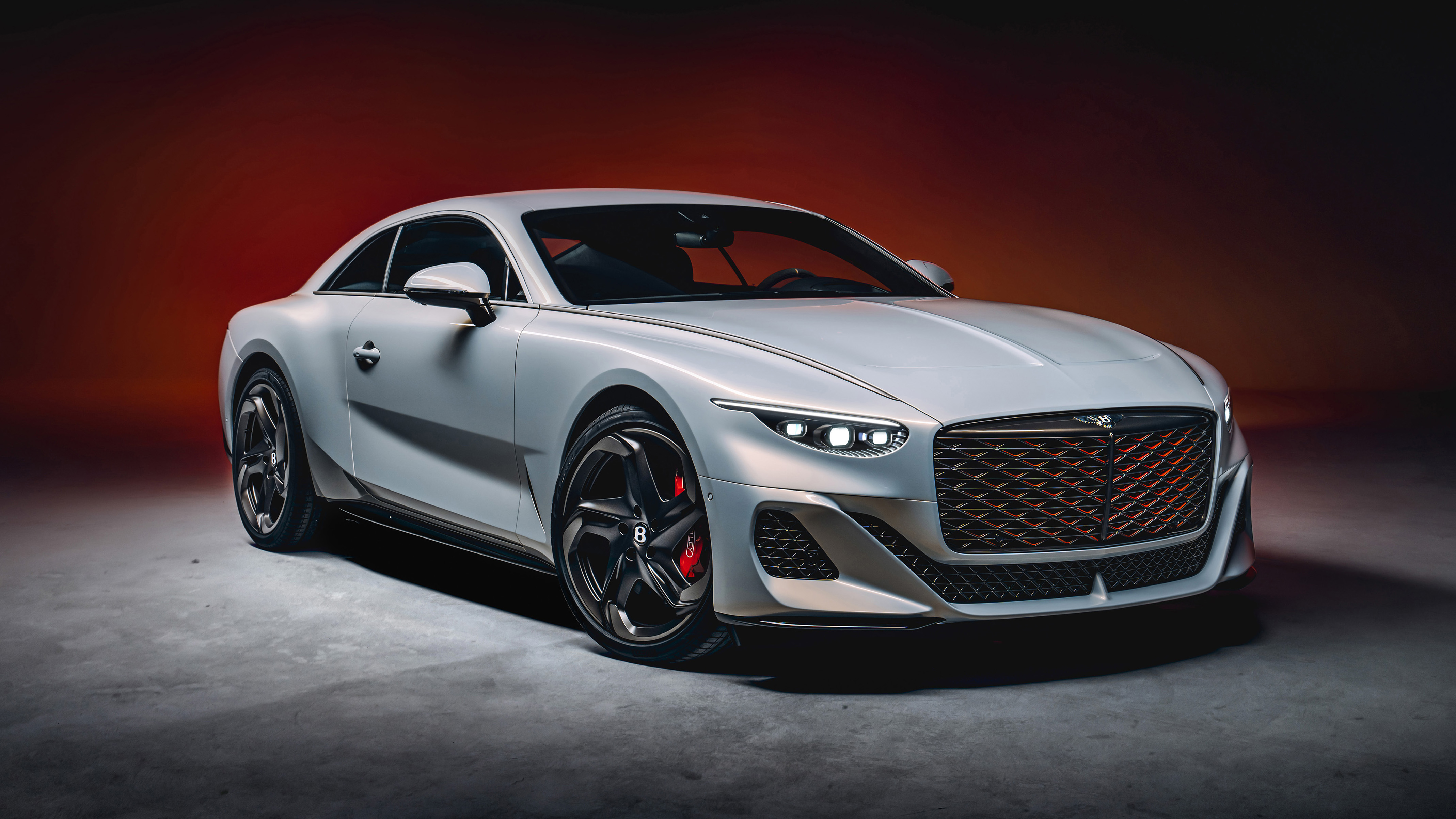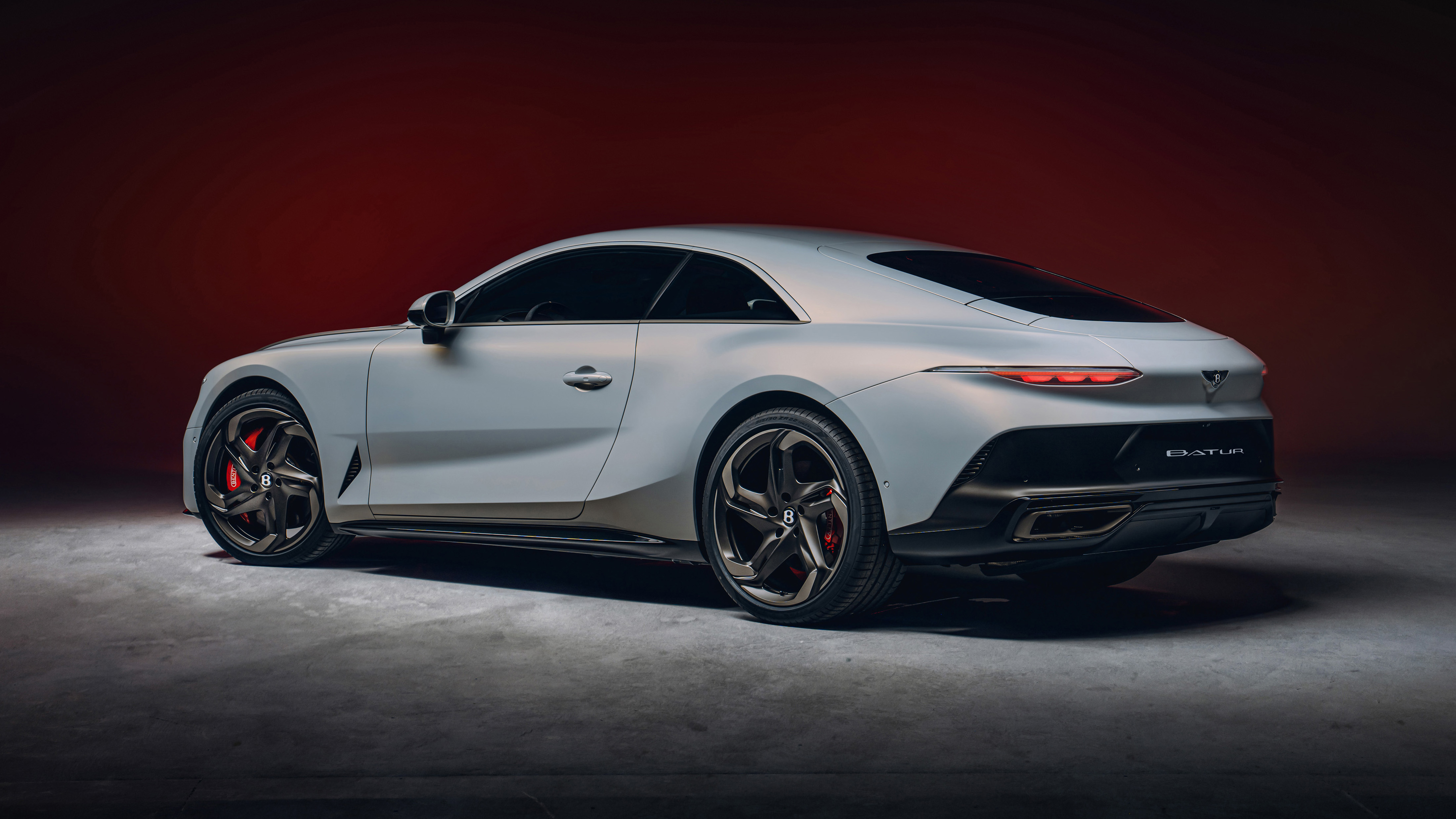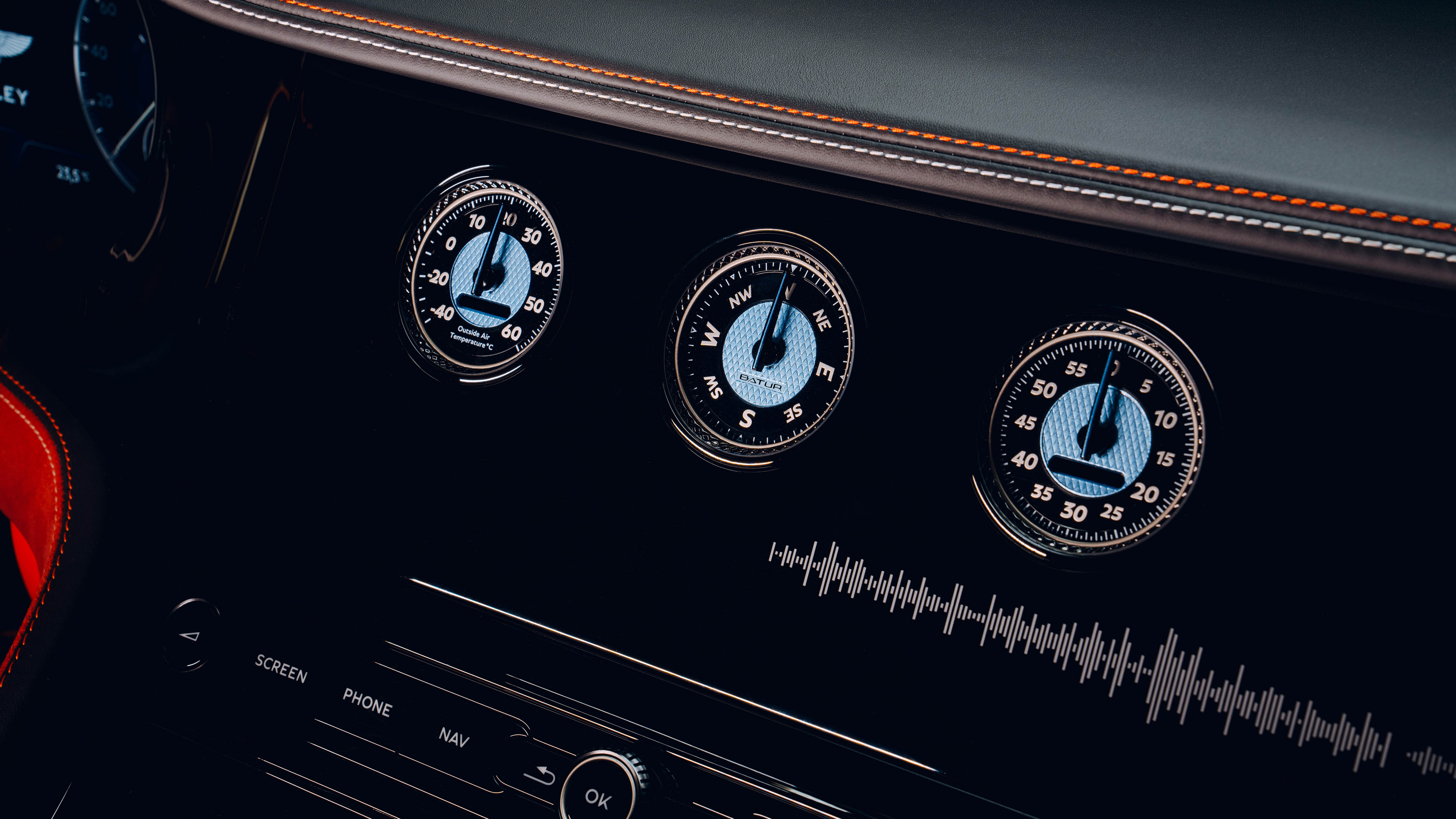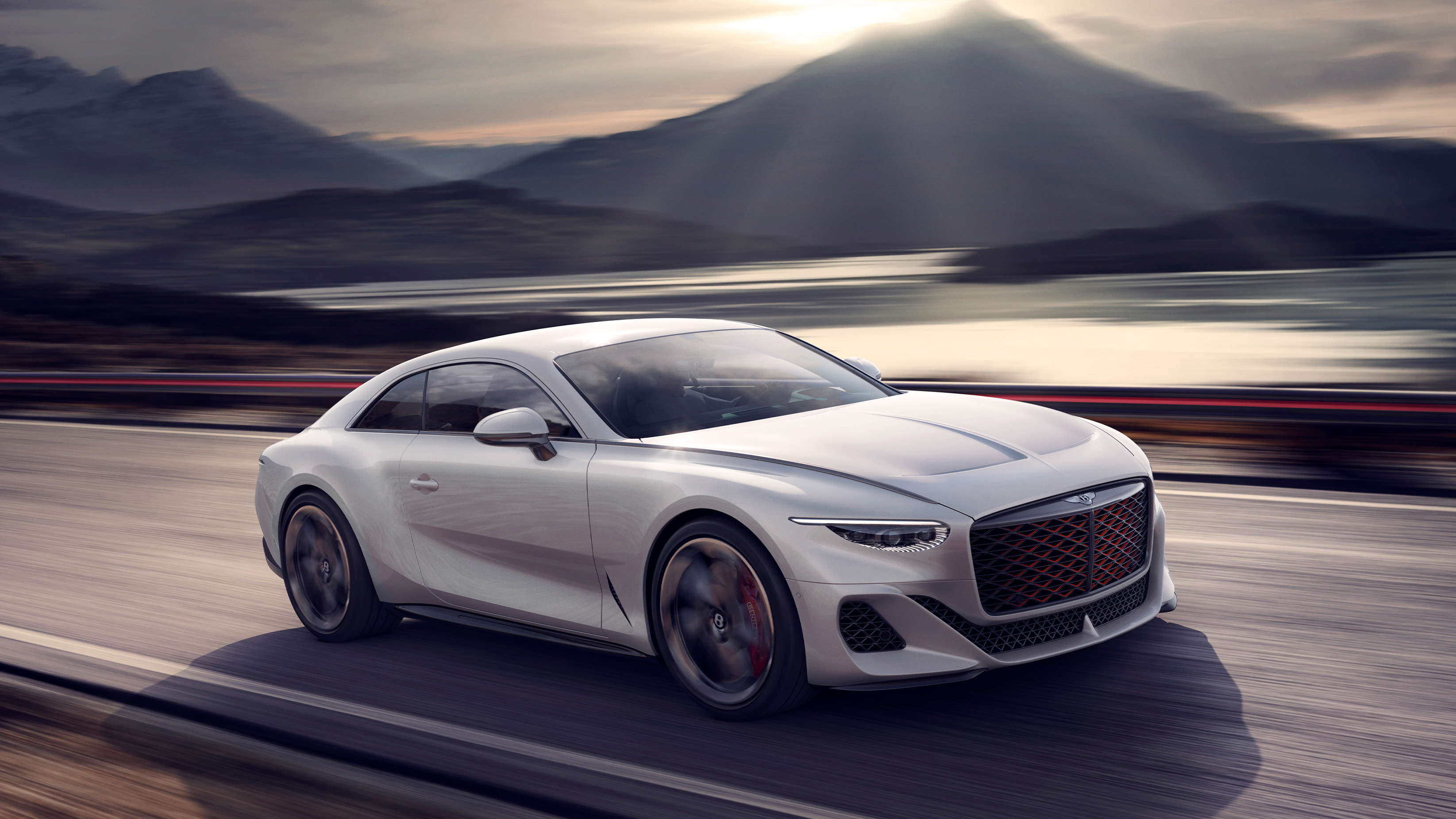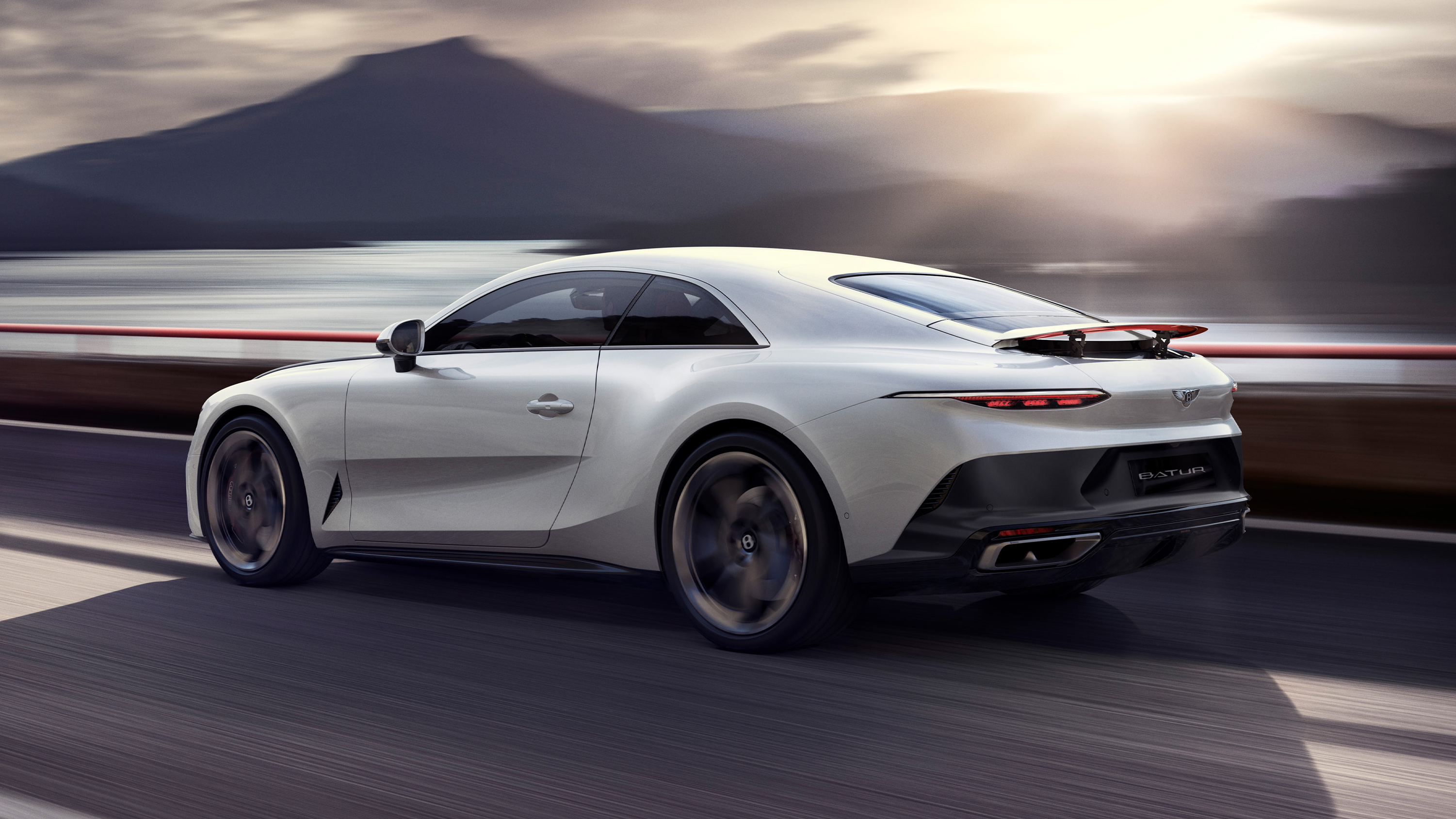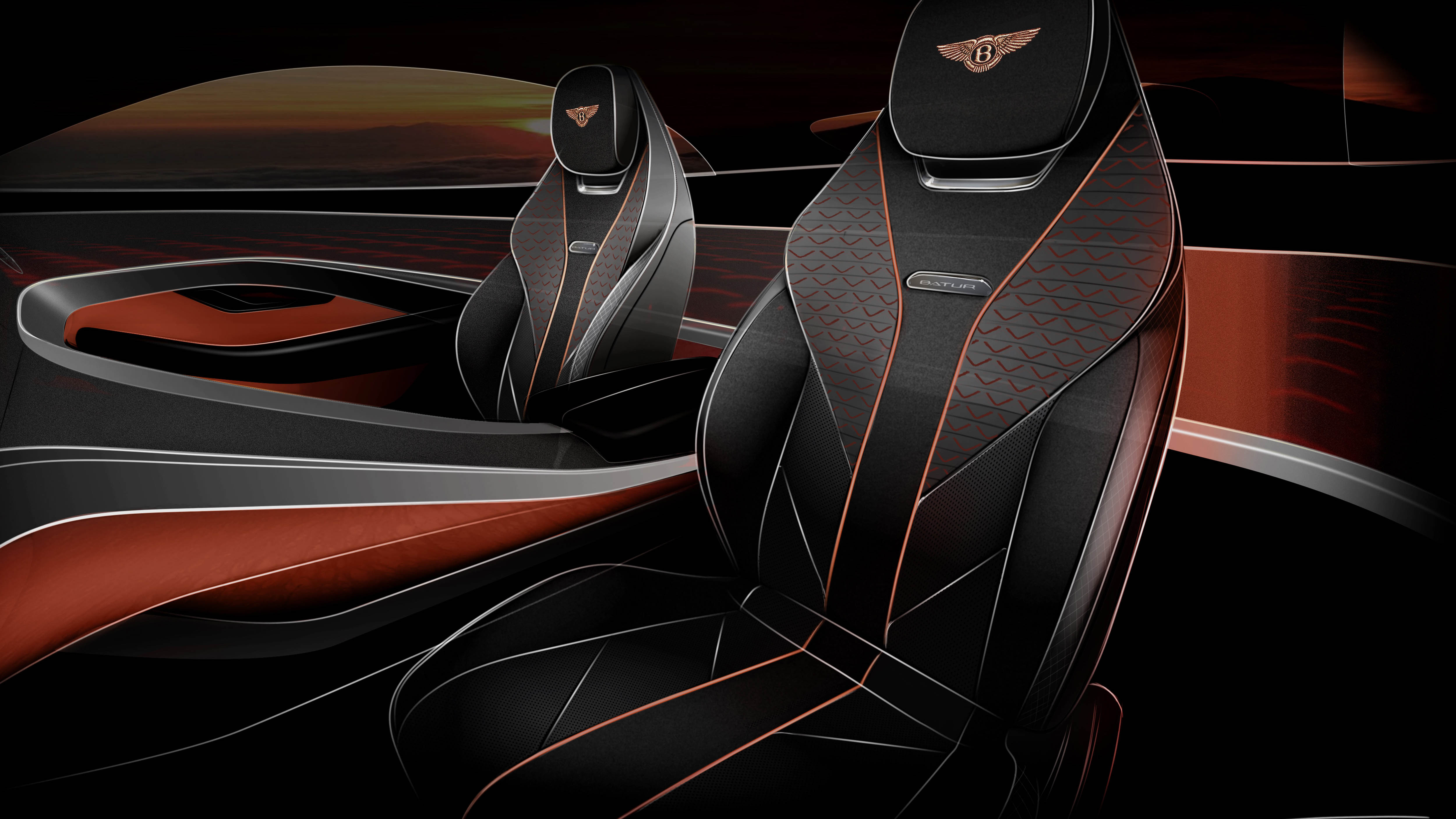
The Bentley Mulliner Batur is a £1.65m coachbuilt grand tourer
Bentley shows off its future EV design language... by fitting its 6.0-litre W12 to a mad limited-run special
File under 'British Eccentricity'. Bentley has decided to show the main features of its new design language for the electric era… on a 12-cylinder petrol burner that's the most powerful road car it has ever built.
The Batur is another collectors' Bentley, a sequel to the sold-out Bacalar roadster. But looks very different, and not just because it's a coupe. Only 18 of them will be made, and Bentley has already shown the design in secret to some of its best customers. Chalk it up as a success: it sold out many weeks before the public unveiling at the Monterey Car Week.
At a price of £1.65 million each. That's plus VAT or the local equivalent, but I guess these are the sort of collectors who go by Leona Helmsley's motto 'only the little people pay taxes' (said shortly before she was imprisoned for tax evasion). Whatever their tax arrangements, they have taste, eh?
The Batur is a thorough but surprisingly subtle re-body of the Continental Speed. And wonderful though the Speed is, I guess an extra dollop of horsepower and handling dynamism can do no harm. So the W12 engine is titivated up to 740bhp and 737lb ft of torque – a nice round 1000Nm if you speak metric.
The Batur might be remembered as a pivotal car. Facing back, it's the last and most powerful of the W12s and the highpoint of Bentley's petrol era. Facing forward, it's the start of a design reboot.
That makes it the first part of Bentley's answer to a question that faces all the extant luxury and supercar makers. After a history – more than a century in this case – of building cars that are visibly shaped around mammoth engines, what happens to the design when it's necessary to make electric cars?
Bentley got a new design director last year, Andreas Mindt. Having figured out what he wants to do there over the next several years, he made a rapid start by getting the Batur from a blank screen to the unveiled car in a year. That's possible only because it'll be made in small numbers so it can swerve some of the usual slow industrial processes.
Car design isn't just about pulling the big levers. Even apparently small tweaks can have a profound effect on the final result. Mindt has come up with a detail that has a key effect on your perception of the Batur and will become a signature on the future Bentleys. A trim bar, titanium coloured in this case, begins on a hull-like chine near the leading edge of the bonnet, sweeps back past the windscreen pillar and mirror, and on towards the back of the car. Its effect is to optically lengthen the front end of the car: an 'endless bonnet' Mindt calls it.
Past Bentleys have had to wrap up to eight litres of straight-six out front, so it's a strong historic thread. The proportions of electric cars are wholly different, because the front motors are so physically small and the cabins can be longer. But this new line acts as trompe l'oeil, making you perceive more out front than actually exists.
Mindt says the faces of too many EVs are mostly generic, but the Batur's front graphic can work for an EV and make it distinctive. The grille is mounted lower and more upright than in the Continental: 'self-confident', he says. The matrix floats, apparently unbound to the surrounding panels. The Batur's grille has an intricate pattern to admit cooling air; in an EV it could be textured but mostly blanked off.
Top Gear
Newsletter
Thank you for subscribing to our newsletter. Look out for your regular round-up of news, reviews and offers in your inbox.
Get all the latest news, reviews and exclusives, direct to your inbox.
As with the Bacalar the headlights are two main units not Bentley's previous quartet. Their internal patterning is different from the 'crystal tumbler' style that Bentley has recently used, their texture instead coming from intricate strings of LEDs. Mindt says, "Luxury customers are moving from traditional to modern, and they want less decoration and chrome. Light will do the job of chrome in the future." Around the back we find newly slimmed light clusters.
Mindt says the tail's darkened lower panel makes the car look less heavy and adds some tension. In future Bentley cabins will have relatively small, upright glazed areas to minimise solar heat gain, so it's important to reducing the body's apparent bulk. The overall body form is simplified, and its surfaces slightly inflated: "It's as if our supercharger were blowing into the body and pushing the panels outward." That titanium bar also hides the bonnet's shut line, so the front end appears monolithic. The Batur is wider than the underlying Continental Speed, with increased rear track both for looks and traction.
In the cabin, jewellery elements – transmission knob, vent controls – are 3d-printed gold, with hallmarks. The upholstery stitch pattern echoes the radiator grille, black and red in a diamond texture. The back seat is swapped out for a platform, taking the luggage of the epic grand tours this car paints in the imagination.
Shed a tear: Bentley says the Batur's engine is the final development of its W12, by production numbers the most successful 12-cylinder engine ever. Versus the Speed's, it's not just a chip job. There is new software of course as it's part of a package with a revised intake system, new intercoolers, new compressors in the turbochargers, improved oil cooling, plus a titanium exhaust system. Quite a list of upgrades for just 18 cars. I'd guess if you're a special customer they might fit it to your Speed. The chassis inherits from the Speed a 48V anti-roll system and four-wheel steering, plus electronically controlled limited-slip rear differential. The Speed is a truly special car to drive; the Batur promises more again.
Ferrari makes its coachbuilt cars by the hundred; there will be 599 of the new Daytona SP3. Aston Martin does much the same. So I ask the boss of Bentley's Mulliner coachbuilding division, Paul Williams, why there will be just 18 Baturs, and why the Bacalar was limited to 12. "I could sell 50 of these without a problem, to be honest," he grins. But then, a quick win now would harm the long-term strategy. It is critical that the coachbuilt cars always remain in short supply, to keep their values up. "We are prioritising relationships with the buyers. We know these customers." If they appreciate in value, repeat business will flow. He doesn't say, but we all know, that McLaren and Aston Martin have suffered by over-supplying some of their special-edition cars in the past three years.
Williams adds: "Also, Ferrari has a range of great cars from the 1950s and 1960s that it can take inspiration from. We had a lean period in those years." All the more reason for the Batur's design to gaze forward more than backward.
ANDREAS MINDT AND HIS BENTLEY ELECTRIC PHILOSOPHY

Just in time for its first all-electric car to be designed, Bentley got a new design chief. He is Andreas Mindt. Back in 1999 he worked on the mid-engined Bentley Hunaudières concept that in many ways led to the Bugatti Veyron. But then he moved on within the VW Group and his later work is the Audi Q8 and e-Tron GT.
He arrived at Bentley a year and a half ago and for the first six months he pondered, studying past Bentleys to distil the brand's visual appeal. "For any design team, the chance to redefine our own rules is the most exciting challenge. We have reimagined the Bentley design language, keeping some continuity while also drastically changing key elements."
The headline on his mood board says 'potent, inspirational and harmonious'. But three words don't draw a car. Part of his study was to locate the visual elements of the best cars Bentley has ever done. Unusual for sporty cars, their profile has no wedge. But they look as if the weight rests on the rear wheels, despite the fact the engine is in the front. And that layout means the 'endless bonnet' and big upright grille.
Now, how will an EV have an endless bonnet and a vertical grille? Those are relics of the combustion age aren't they? Mindt says not. While the actual proportions of an electric car will be different from an ICE car, "there is no need to show it's an EV". (Anyway, at the first generation Continental GT, the proportions changed significantly, the front axle moving backward as Bentley went from RWD to 4WD.)
Many manufacturers make their coachbuilt cars look outrageous. But if you hadn't been told, you wouldn't guess the Batur is the most powerful roadgoing Bentley ever. "Bentley is subtle. It doesn't scream. It's like a resting beast, not an attacking one."
Trending this week
- Car Review
BMW 1 Series
- Top Gear's Top 9
Nine dreadful bits of 'homeware' made by carmakers




